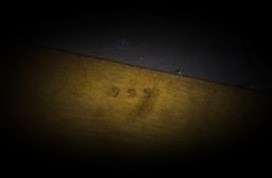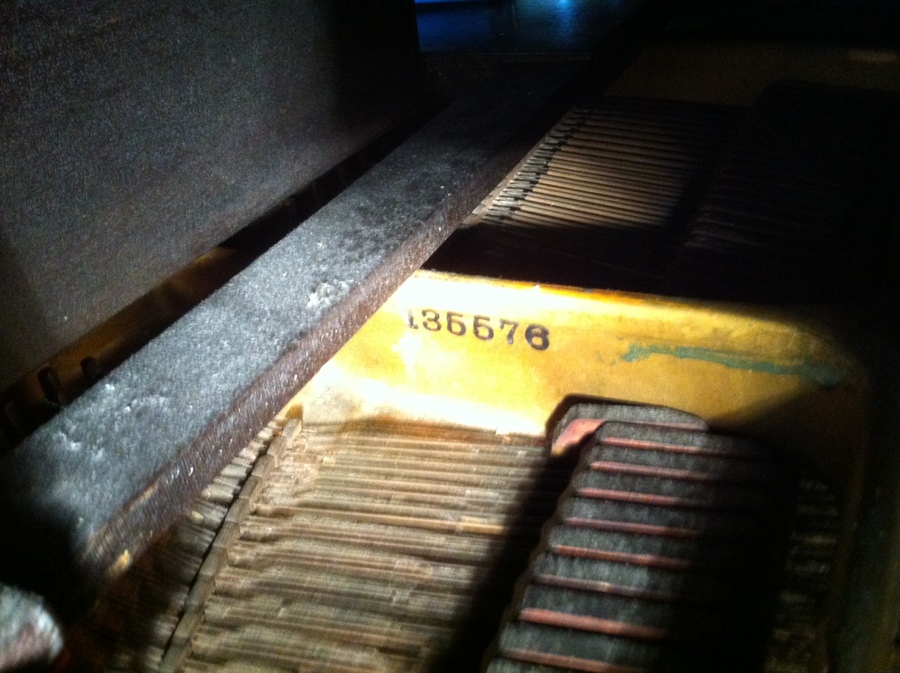- Chickering and Sons Piano, Serial Number 127696, good condition, 36'h x 63'l x 55'w: $475.00 If you have any questions, please at 805-six88-seven960. Do NOT contact me with unsolicited services or offers.
- Chickering & Sons. Jonas passed away in 1853. By 1908 the company was sold to the Aeolian Corp. Of New York, and later this merged into the Aeolian-American piano company in 1932. The Chickering plant located in East Rochester, NY was closed in 1982, and Chickering was sold to the Wurlitzer Piano Co.
- To have your pre-1890 Chickering (serial numbers below 100,000) included in the Registry, send an email to info@chickeringfoundation.org. About the Chickering Foundation. Because of his numerous and groundbreaking contributions to the development of the piano as it is known today, Jonas Chickering has frequently been called the “father of the modern piano.”.
- Chickering and Sons Baby Grand piano ChickeringChickering and Sons Baby Grand piano Chickering and Sons Baby Grand piano, circa 1978, serial number 242788, having a Neoclassical laquered case having; Antique Steinway & Sons Mahogany Grand Piano:Antique Steinway & Sons Mahogany Grand Piano: Antique Steinway & Sons New York Model L Grand Piano.
| Type | Private (1823–1983) Brand (1985–?) |
|---|---|
| Industry | Musical instruments |
| Founded | 1823 in Boston, Massachusetts |
| Founder | Jonas Chickering |
| Defunct | 1983; 38 years ago |
| Headquarters | , United States |
| Products | Pianos |
Antique 1947-1950 Chickering Piano Item: Used Condition: Good Shipping: Local Pick-Up Only Up for sale is an antique console 88 key Chickering& Sons piano. Based on the serial number. This piano was manufactured between 1947 and 1950.
Chickering & Sons was an American pianomanufacturer located in Boston, Massachusetts. The company was founded in 1823 by Jonas Chickering and James Stewart, but the partnership dissolved four years later. By 1830 Jonas Chickering became partners with John Mackay, manufacturing pianos as 'Chickering & Company', and later 'Chickering & Mackays' until the senior Mackay's death in 1841, and reorganized as 'Chickering & Sons' in 1853. Chickering pianos continued to be made until 1983.
History[edit]
It was P.T. Barnum who persuaded Jenny Lind - the Swedish Nightingale - to make a concert tour of the United States. After her agreement, Barnum commissioned the Chickering company to manufacture a custom grand piano for her nationwide tour, ultimately involving 93 performances. The piano was completed by August 1850; Lind arrived in September and the concert series began in Boston. Her pianist was Otto Goldschmidt, whom she married at the end of her tour.

How Much Is A Chickering Piano Worth
Coincidentally, as the tour began, Henry E. Steinway (Steinweg) and his large family arrived in New York as immigrants from Germany. Henry attended the opening night of the NYC concert series but showed little interest in the diva. His profound interest was in the Chickering piano, to which he dashed for such careful examination that he nearly had to be hauled away so the concert could begin.
On December 1, 1852, a fire destroyed Chickering's piano factory located at 336 Washington Street in Boston. One policeman was killed. The walls of the building collapsed, and set adjoining structures on fire. A new factory was built in 1853-54 at 791 Tremont Street in Boston. From 1860-1868 space in the building was the location of the Spencer Repeating Rifle Company, who made over 100,000 rifles and carbines for the U.S. Army and sportsmen from 1862-1868.[1] This structure still stands today. It was renovated into artist studios in 1972.[2]
Jonas Chickering made several major contributions to the development of piano technology, most notably by introducing a one-piece, cast-iron plate to support the greater string tension of larger grand pianos. He also invented a new deflection of the strings, and in 1845 the first convenient method for over stringing in square pianos. Instead of setting the strings side by side, the company introduced substituting an arrangement of the string in two banks, one over the other. This not only saved space but brought the powerful bass strings directly over the most resonant part of the sound-board, a principle used to this day in the construction of all pianos, both grands and uprights.


Chickering was the largest piano manufacturer in the United States in the middle of the 19th century, but was surpassed in the 1860s by Steinway. In 1867, Jonas's son Frank Chickering had the Imperial Cross of the Legion of Honour, then one of the world's most prestigious non-military awards, bestowed upon him by Emperor Napoleon III for services to the art of music, one of more than 200 awards the piano manufacturer garnered over the years.
The company became in 1908 part of the American Piano Company (Ampico),[3] and continued after the merger in 1932 of American with the Aeolian Company, to form Aeolian-American. That company went out of business in 1985, and the Chickering name continued to be applied to new pianos produced by Wurlitzer and then the Baldwin Piano Company.
Chickering Halls[edit]
The firm commissioned and operated several concert halls in Boston and New York:
What Is A Chickering Piano Worth
- Chickering's building, Boston (c. 1850s), no.334 Washington St.[4]
- Chickering's Hall, Boston (1860-1870), no.246 Washington St.[5]
- Chickering Hall concert auditorium, 130 5th Avenue, New York City (1877), designed by George B. Post, and the venue for Oscar Wilde's first lecture in America in 1882 (razed) [6][7]
- Chickering Hall, Boston (1883-c. 1894), no.152 Tremont St., near West St.[8]
- Chickering Hall, Boston (1901-c. 1912), Huntington Ave., corner of Massachusetts Ave.[4]
- Chickering Hall, 27 West 57th Street, NYC (1923), designed by Cross & Cross (1924)[9]
Images[edit]
The Chickering factory in 1895.
Portrait of George H. Chickering (d.1899)[10]
Antique piano at Stanley Hotel (note the 'C...e...g' in 'Chickering' aligns with the CEG chord on the piano)
Chickering Hall, New York, no.130 5th Av.
Chickering Hall, Boston, Huntington Ave., c. 1900s
Chickering Monument by Thomas Ball (1872).
References[edit]
- ^Marcot, Roy A. 'Spencer Repeating Firearms' 1995.
- ^Chickering Piano Works Fire at CelebrateBoston.com
- ^Grove's dictionary of music and musicians. NY: 1920
- ^ abThe commemoration of the founding of the house of Chickering & Sons upon the eightieth anniversary of the event, 1823-1903. Boston: Chickering & Sons, 1904
- ^'Closing of a Well-Known Concert Room.' Dwight's Journal of Music, v.30, no.5, May 21, 1870.
- ^https://www.oscarwildeinamerica.org/lectures-1882/january/0109-new-york.html
- ^Stern, Robert A. M.; Mellins, Thomas; Fishman, David (1999). New York 1880: Architecture and Urbanism in the Gilded Age. Monacelli Press. ISBN978-1-58093-027-7. OCLC40698653.
- ^'Americanization of piano trade in U.S. exemplified by Chickering & Sons.' The Music Trades, April 5, 1919
- ^Miller, Tom. 'The 1924 Chickering Hall -- No. 27-29 West 57th Street'. Daytonian in Manhattan. Retrieved 21 October 2018.CS1 maint: discouraged parameter (link)
- ^George H. Chickering Dead; Last Male Survivor of the Well-Known Family of Piano-forte Makers Passes Away in Boston.' New York Times, November 18, 1899

Further reading[edit]
- Chickering & Sons. Catalog, 1883
- Chickering & Sons. Exhibit of musical instruments, Boston, 1902
External links[edit]
| Wikimedia Commons has media related to Chickering & Sons. |
- Chickering in the grand piano-Photoarchive[permanent dead link]
- Boston Public Library. Chickering Piano Factory building. Boston, South End. Photo by J.J. Hawes, 19th century
- Flickr.
- Photo of Piano Factory, Tremont St., South End, Boston, 2011
- Photo of Piano Factory, Tremont St., South End, Boston, 2010